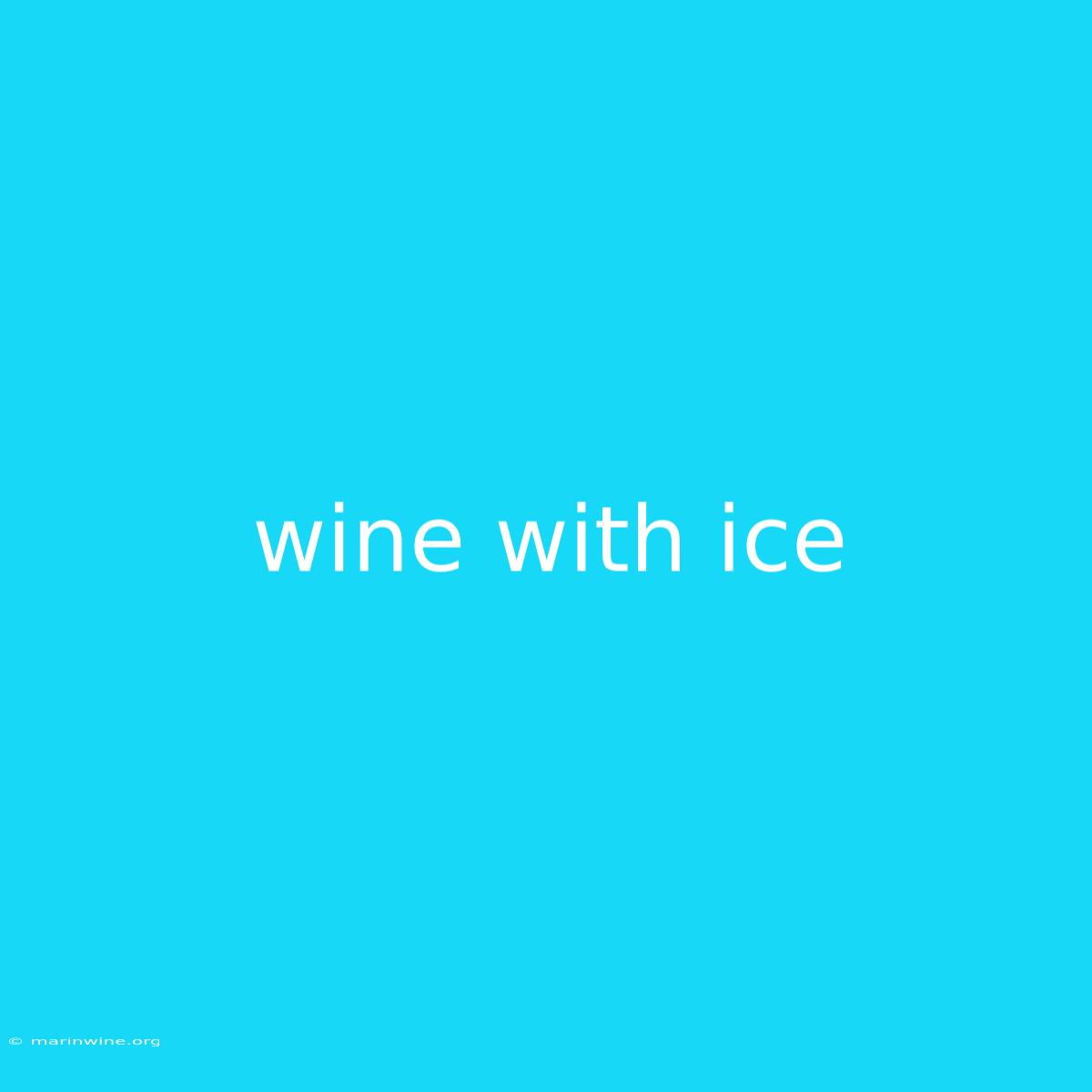Is It Okay to Put Ice in Wine? The Surprising Truth!
Have you ever wondered if it's okay to put ice in wine? Many wine enthusiasts would scoff at the idea, but some wine experts actually encourage it! This article will explore the surprising truth about enjoying wine on the rocks, delving into why some wines benefit from this unconventional approach.
Why This Matters:
This article aims to demystify the ice-in-wine debate. You'll gain insights into the complexities of chilling wine, the potential benefits of adding ice, and discover which types of wine respond best to this unique serving method. We'll also explore alternative ways to cool wine, such as using ice water or wine chillers.
Key Takeaways:
| Takeaway | Description |
|---|---|
| Ice in wine can enhance flavor and aroma. | Chilling with ice can help release subtle nuances and aroma compounds. |
| Not all wines benefit from ice. | Certain types of wine, like reds, may not be ideal for chilling with ice. |
| Ice can dilute the wine's flavor and acidity. | Excessive ice can water down the wine, making it less enjoyable. |
Wine With Ice: A Deeper Dive
Introduction:
While many wine enthusiasts hold the traditional view that ice is a no-no in wine, there's a growing recognition that certain wines can actually benefit from chilling with ice. The key lies in understanding how ice affects the wine's flavor and aroma.
Chilling Effects:
Ice chilling offers a rapid cooling method, quickly bringing the wine to a desired temperature. This can enhance the wine's aroma by releasing volatile compounds, making the flavor more noticeable. For example, some white wines, with their fruity and floral notes, can be heightened with a touch of ice.
Choosing the Right Wine:
The best wines for enjoying with ice are those with robust flavors that can withstand dilution and chilling. These include:
- Fruity White Wines: Sauvignon Blanc, Riesling, Pinot Grigio
- Sparkling Wines: Prosecco, Cava, Champagne
- Rosé Wines: Dry, crisp styles with bright fruitiness
Risks and Mitigation:
Using ice with wine comes with a few potential downsides:
- Dilution: Ice melts, diluting the wine and potentially reducing its flavor intensity.
- Acidity: Chilling can accentuate a wine's acidity, making it taste more tart.
- Over-Chilling: Excessive chilling can mask the wine's flavor and aroma complexity.
Mitigation Strategies:
- Use fewer ice cubes: Start with a small amount of ice and add more gradually.
- Choose larger ice cubes: Larger ice cubes melt slower, minimizing dilution.
- Avoid over-chilling: Let the wine come to room temperature slightly before serving.
Exploring the Impact:
While ice can enhance some wines, it can also hinder others. For example, full-bodied red wines, known for their complex tannins and flavors, may be overshadowed by the chilling and dilution effect of ice.
Alternative Cooling Methods:
If you prefer to avoid ice altogether, consider these alternatives:
- Wine Chillers: Pre-chilled metal or ceramic chillers rapidly cool the bottle without affecting the wine's flavor.
- Ice Water Bath: Submerge the bottle in a bowl of ice water for a few minutes.
FAQ:
Q: What if I accidentally put ice in a bottle of expensive wine?
A: It's best to remove the ice as soon as possible and allow the wine to warm up slightly. The ice will have diluted the wine, but the flavor may still be enjoyable.
Q: Is it okay to put ice in a glass of red wine?
A: While some people enjoy chilling their red wine, it's generally not recommended as it can mask the complex flavors and tannins.
Q: Is it okay to use flavored ice cubes in wine?
A: Flavored ice cubes can alter the taste of the wine. It's best to use plain ice cubes to avoid any unwanted flavors.
Q: What's the best way to serve wine with ice?
A: Serve wine with ice in a wide-mouthed glass to allow for maximum aroma release and to prevent the ice from being overly concentrated.
Q: Is it safe to drink wine with ice?
A: Yes, it is safe to drink wine with ice. However, be aware of the potential dilution and chilling effects.
Tips for Serving Wine With Ice:
- Start with a small amount of ice: Add ice gradually, tasting the wine after each addition.
- Use larger ice cubes: Larger ice cubes melt slower, minimizing dilution.
- Consider the wine's style: Choose wines with bold flavors that can withstand dilution and chilling.
- Serve in a chilled glass: A pre-chilled glass will help maintain the desired temperature.
- Enjoy responsibly: Remember to drink in moderation.
Summary:
Serving wine with ice can be a refreshing and enjoyable experience, especially with certain types of wine. While ice can enhance the aroma and flavor of some wines, it's crucial to use it judiciously and avoid over-chilling. Understanding the factors that influence the impact of ice on wine can help you enjoy a more flavorful and satisfying experience.
Final Message: Embrace the freedom of experimenting with wine and discover what works best for your palate. Don't be afraid to try new things and break free from traditional conventions. Cheers!

